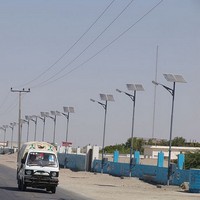The Asian Development Bank (ADB) recently confirmed that Pakistan’s lackluster economic performance in recent years is essentially a reflection of its ongoing energy crisis. A combination of factors, including an unbalanced power-generating portfolio, the insurgency in Balochistan and natural calamities such as the devastating floods in 2010, have complicated the task of Pakistan’s energy planners.
Long dependent on natural gas to meet transport and urban domestic requirements, Pakistan is facing a spike in its oil import bill due to gas shortages. Meanwhile, the electricity sector is finding it difficult to deal with the inherently intermittent nature of hydropower as a power-generation mainstay, as well as with expensive oil-fired generation as a backup. An improvement in Pakistan’s energy situation requires both a much larger share of coal in its power-generating portfolio and international cooperation to enhance the availability of natural gas. Neither course is likely to be successful without foreign investment and a rapprochement with India.
Pakistan’s energy crisis spans sectors. In electricity, Pakistan faces a shortfall of at least 20 percent of the wattage required to meet peak demand. Given that 50 percent of Pakistani households still do not have access to the electrical grid, Pakistan needs to dramatically augment its base-load generating capacity. Moreover, according to Pakistani government sources, electricity shortages have led to the shuttering of at least 700 industrial factories in the provinces of Punjab and Sindh. The textile industry, Pakistan’s dominant industrial sector, has been hit particularly hard, with cumulative losses exceeding $1 billion in 2011-2012.

